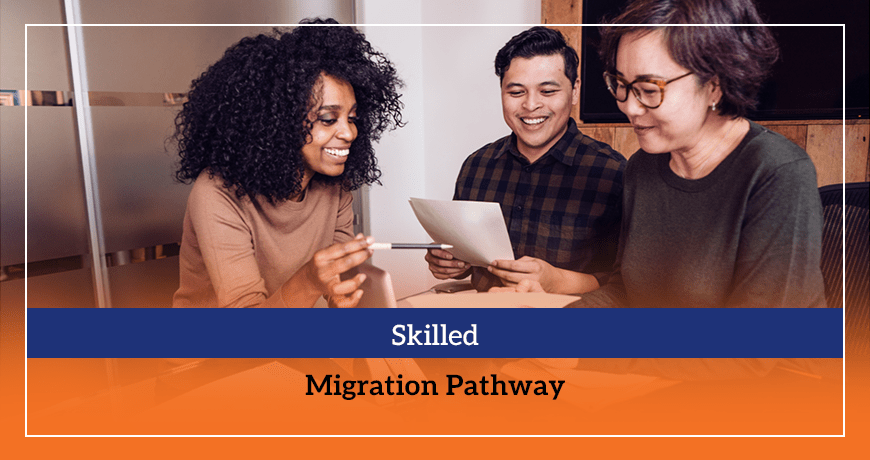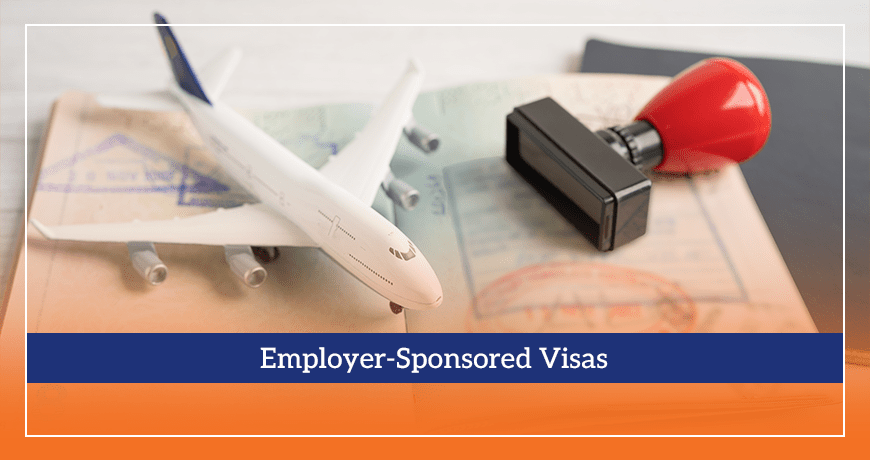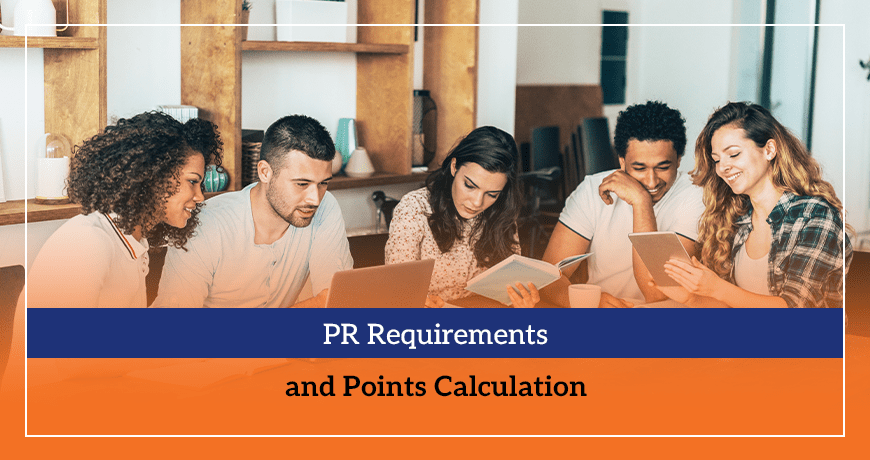Australia, with its point-based immigration system, assesses an applicant on various aspects such as education, skills, work experience, and English language proficiency. The Australian government has announced a review of the PR points system that may take effect from July 2026, refining how points are awarded for qualifications, work experience, and regional study. The total permanent migration program for 2025-26 is 185,000 places, with 132,200 allocated to the skilled stream, indicating continued strong demand for qualified migrants.
With enough points, you can live and work in Australia permanently. Obtaining a PR in Australia has many benefits, such as living, working, and travelling without restrictions, sponsoring family members to live in Australia, and many more. Continue exploring this article, and you'll discover how to get PR in Australia after study.
Understanding The Australian PR Process
Best Way to Get PR in Australia
There are three main pathways to PR in Australia for international students. They are:
- Skilled Migration: This pathway applies to international students who have graduated from an Australian university and have skills in demand in Australia.
- Employer-Sponsored Visas: This applies to international students with valid job offers from Australian employers.
- State or Territory Nomination: This pathway applies to international students nominated by Australia's territory or state government.
Update: Although the minimum points remain 65, invite thresholds are much higher in many occupations due to competition. Applicants should be prepared for higher required scores and fewer places in some visa streams.
Eligibility Criteria for Each Pathway
Each of the above visa categories has its own eligibility criteria. Here are the common criteria for each pathway:
- English language proficiency requirements: You must meet a minimum score to qualify for any of the above pathways, for example, IELTS 6.5 or equivalent.
- Skill assessment: Australia has a Skill Assessment test, which you must pass for your nominated occupation. This test will determine whether or not you have the skillset and experience for the job.
- Points System: You must score enough points in the SkillSelect test. It assesses your age, education, work experience, English proficiency, and other factors and awards points based on them.

Skilled Migration Pathway
General Skilled Migration
The General Skilled Migration is an immigration program in Australia that aims to attract skilled migrants who can significantly contribute to the Australian economy. This program has three main visa categories:
- Skilled Independent visa (subclass 189): This visa category applies to skilled immigrants with minimum points requirements and is not nominated by any territory or state government.
- Skilled Nominated visa (subclass 190): This category is for skilled immigrants who the territory or state government in Australia nominates.
- Skilled Worker Regional (Provisional) visa (subclass 491): This visa category applies to those immigrants willing to live and work in regional areas of Australia.
Steps to Apply for a Skilled Migration Visa
Here are the steps to apply for a Skilled Migration Visa in Australia:
- Expression of Interest (EOI): As the first step of the application process, you must submit an expression of interest to the Department of Home Affairs. Your EOI application will be assessed against the point system, and you will be invited to apply for a visa if you meet the eligibility criteria.
- Skilled Assessment: You must obtain a skills assessment from an approved authority. This assessment will show whether you have the skills and expertise for the occupation you are applying for.
- State or Territory nomination (if applicable): If you apply for a Skilled Nominated Visa, you must be nominated by a state or territory government in Australia.
- Invitation to apply for a visa: If you fulfil the minimum eligibility criteria, the Department of Home Affairs of Australia will invite you to apply for a visa.
- Lodging the visa application: Finally, you must lodge a visa application with the Department of Home Affairs. They will assess your application and notify you of the decision.
Document Requirements and Visa Processing Times
The following are documents you must submit with your visa application in Australia:
- Your identity and citizenship.
- Proof of skills and experience.
- Proof of English language proficiency.
- Medical examination report.

Employer-Sponsored Visas
Temporary Skill Shortage Visa (Subclass 482)
Australia often offers Temporary Skill Shortage Visas, which allow immigrants worldwide to live and work in Australia for up to four years. These visas aim to address the country's skill shortages.
- Employer nomination and sponsorship: To get this visa, an Australian employer must nominate you and prove they cannot find a suitable Australian or permanent resident worker to fill the position.
- English language requirements: You must also meet the English language requirements to get a TSS Visa. This means you must demonstrate a minimum level of English language proficiency.
- Occupation lists: The Temporary Skill Shortage List lists the occupations with a skills shortage in Australia. It is updated regularly to reflect the changing needs of the workforce.
Employer Nomination Scheme (Subclass 186)
It is a permanent visa program for skilled workers to live and work in Australia permanently. It applies to skilled migrants who can contribute to the Australian economy. You must be nominated and sponsored by an Australian employer to get this visa.
Regional Sponsored Migration Scheme (Subclass 187)
This visa category is a permanent policy allowing skilled workers to live and work permanently in a regional Australian territory. You will also need a sponsorship from an Australian employer.
Transitioning from a Temporary Visa to PR
With an Employer-sponsored visa program in Australia, you can apply for permanent residency. An immigration lawyer or agent will be able to walk you through the process of getting permanent residency from a temporary visa.
Update: From 1 July 2025, several employer-sponsored visa rules were updated: nomination salary thresholds were indexed upward, and the new ‘Skills in Demand’ formats replace some older streams, requiring sponsors to demonstrate higher wage levels or regional placement in many cases.
Must Read:
State or Territory Nomination
State and territory nomination can be an excellent way to get permanent residency in Australia. Being nominated by a state or territory government has many benefits, including:
- If a territory or state government nominates you, you will gain extra points for your visa application. This will increase your chances of getting a visa.
- The visa application process will be faster than other visa programs.
- It might give you access to in-demand occupations if you have the proper skill set.
State-Specific Nomination Programs
There are two state-specific nomination programs in Australia. They are:
- Skilled Nominated Visa (Subclass 190): It is open to skilled migrants nominated by the territory or state government.
- Skilled Work Regional (Provisional) visa (subclass 491): This visa applies to skilled immigrants who want to live and work in a regional territory of Australia. The state or territory government sponsors it.
Identifying In-Demand Occupations and Regional Areas
If you are willing to apply for a state-sponsored visa in regional areas, first, you should check the in-demand occupations in that part of Australia. You can find them on the Skilled Occupation List (SOL) or the Regional Occupation List (ROL).

Top PR Courses in Australia 2026
Choose courses linked to occupations on the latest skilled occupation lists (Core Skills Occupation List, MLTSSL, etc.). High-demand areas for 2026 include:
- Engineering (Civil, Electrical, Chemical, Mining, Petroleum, Agricultural)
- ICT & Software (Support Engineer, Systems Analyst, Software Engineer, Tester)
- Accounting, Auditing, Finance Management
- Nursing, Midwifery, Paediatric Nursing
- Teaching (Primary, Vocational Education, University Lecturer)
- Social Work, Oral/Dental Health Science (BOralH, BDSc)
- Construction Management (Project Manager, Estimator, Building Inspector)
- Hospitality & Chef courses (subject to state or regional nomination)
Accredited Courses & Institutions
Ensure your course is CRICOS-registered and offered by a recognised institution. The program must meet the requirements of the relevant assessing authority for your chosen occupation. For trade occupations, additional assessment and practical requirements may apply.
Meeting the Educational Requirements for PR
A positive skills assessment from the relevant assessing authority is mandatory. Most professional roles require at least a Bachelor’s degree (AQF Level 7 or higher). Trade roles may qualify with a recognised diploma or certificate plus relevant experience. Applicants must also meet English language, age, health, and character criteria to qualify for skilled migration.
How to Apply for PR in Australia After Study?
Here is a standard step-by-step PR application process in Australia:
- Firstly, you must collect the required documents, such as your passport, academic certificates, work experience certificates, language proficiency results, etc.
- Then, you must undertake a skill assessment to demonstrate that you have the skills and qualifications for the job you are applying for.
- Next, you must submit an Expression of Interest to the Department of Home Affairs. They will assess your EOI based on your education and skills.
- You may sometimes need to be nominated by a territory or state government to get permanent residency in Australia.
- If the Department of Home Affairs accepts your EOI, you can apply for PR in Australia.
- At this stage, you'll have to apply for a visa to the Department of Home Affairs. This application should include all your documents, including your EOI.
- Finally, you must take a medical test and a criminal background test. You must pass both tests to be eligible for the PR.
Update: Studying in regional Australia or completing a higher qualification (master’s level) plus Australian work experience is increasingly regarded as a competitive advantage in the skilled migration process for 2026.

PR Requirements and Points Calculation
English Language Proficiency Requirements
We already know that you must meet certain English language requirements to get a PR in Australia. The requirements can vary depending on many factors, but the typical score is IELTS 6.5 or equivalent.
Skill Assessment and Occupation Lists
You must also demonstrate that you have the right skills and expertise to perform the job you are applying for. You can check available in-demand occupations from the ROL or SOL lists.
Points-based System and Calculating Your Points
Australia has a point-based immigration system where you must get a minimum number of points to be eligible for PR. The following table shows points of various factors:
|
Factors
|
Points
|
|
Age (Up to 44)
|
Up to 30
|
|
English Proficiency
|
Up to 20
|
|
Work Experience
|
Up to 15
|
|
Education
|
Up to 15
|
|
Partner Skills
|
Up to 10
|
Additional Point Opportunities
The following are some ways you can earn additional points for PR in Australia:
- Higher study in Australia
- Higher study in regional areas of Australia
- Being a partner of an Australian citizen or permanent resident. This is probably the best way to get PR in Australia.
Duration For PR Processing
Many people want to know how long it takes to get a PR in Australia after studying. The average duration for PR processing time in Australia depends on various visa subclasses. However, depending on the visa category, it can take 6.5 to 18 months.
Several factors can affect the PR processing time, such as the current demand for visas, the complexity of your application, and how long your application takes.
State Comparison For PR Opportunities
Australia has two territories and six states. Its states are New South Wales, Victoria, Queensland, Western Australia, South Australia, and Tasmania. The territories are the Australian Capital Territory and the Northern Territory.
Each state is unique and has its own economy, culture, and climate. Some states and territories have nomination programs for skilled migrants.
The following table shows comparisons between different states and territories and how many years it takes to get a PR in Australia:
|
State
|
Nominated Program
|
Average Processing Times
|
|
New South Wales
|
Yes
|
6 to 8 months
|
|
Victoria
|
Yes
|
6 to 8 months
|
|
Queensland
|
Yes
|
6 to 8 months
|
|
Western Australia
|
Yes
|
6 to 8 months
|
|
Southern Australia
|
Yes
|
6 to 8 months
|
|
Tasmania
|
Yes
|
6 to 8 months
|
|
Australian Capital Territory
|
No
|
6 to 8 months
|
|
Northern Territory
|
No
|
6 to 8 months
|
Seeking Professional Assistance
Applying for PR in Australia is a complex and time-consuming process. It has many clauses and loopholes that only expert eyes can spot. That’s why you should seek professional help where necessary.
- Engaging with migration agents or lawyers: Immigrant lawyers and agents will help you throughout the application process. They’ll provide information and assist you in every step.
- Researching and understanding official government resources: You will find many government resources, like immigration websites, to gather information. Make sure to use these resources and research the process.

Frequently Asked Questions
How to get PR after studying in Australia?
To obtain a post-study work permit in Australia, apply for PR directly after completing your education. Fulfil residency and employment requirements, apply for a Temporary Graduate visa (subclass 485), gain relevant work experience, and then apply for a permanent visa through pathways like Skilled Independent visa (subclass 189) or Employer Nomination Scheme (subclass 186).
Can I stay in Australia after completing my studies?
Yes, Australia offers visa extensions for international students to live, pursue further qualifications, or find employment in their field. With a post-study work visa, you can stay for up to four years, depending on your qualifications.
Is it easy to get PR in Australia after study?
Getting a PR in Australia after studying is challenging and requires meeting specific criteria, such as skill assessments and points tests.
Which State Is Easy to Get PR in Australia?
Tasmania is considered the easiest state in Australia to obtain a Permanent Residency (PR) due to its streamlined processes, high demand for skilled professionals, and affordable living conditions. Other favourable states include South Australia, New South Wales, and Victoria.
What is the SkillSelect program?
SkillSelect is an online service by the Australian Department of Immigration and Border Protection. It allows potential migrants to submit an Expression of Interest (EOI) for a skilled visa, indicating their desire to apply for permanent residency based on their qualifications, work experience, and other factors.
What benefits do I get from Australian PR?
As a permanent resident, you can live and work in Australia indefinitely, sponsor family members for PR, access Medicare, be eligible for government schemes and higher education loans, and have a pathway to Australian citizenship. Children born to PR holders in Australia are usually granted Australian citizenship.
How can I improve my chances of getting a PR visa in Australia?
You can enhance your chances by gaining work experience in Australia, increasing your level of qualification, improving your English language skills, choosing to study at a regional university, considering your age, and participating in professional year programs (PYP) in fields like computer science, engineering, and accounting.
What can disqualify me from getting PR in Australia?
Reasons for disqualification may include selecting the wrong type of visa, submitting an incomplete visa application, failing to meet health requirements, insufficient financial resources, having reportable offences on an earlier visa, previous involvement in criminal activities, or failing to meet the eligibility criteria.
How long does it usually take to get PR in Australia after applying?
The processing time for PR visas can vary, but most visas under the General Skilled Migration category, such as the Subclass 189, 190, and 491 visas, typically take 8 to 12 months to process.
Is there an age limit for applying for PR in Australia?
Yes, there is an age limit for most PR visa categories. Applicants are generally required to be under 45 years of age at the time of invitation to apply for PR. Age is also a factor in the points test, with different age groups awarded varying points.
What happens if my PR application is refused?
If your PR application is refused, you will receive a notification explaining the reason for the refusal. You may have the option to review the decision if you believe an error has been made, or you may consider alternative visa options or pathways based on your circumstances.
Can I include my family members in my PR application?
Yes, when applying for PR, you can include certain family members, such as your spouse or de facto partner and your dependent children. Each family member must meet health and character requirements.
Final Thoughts
Understanding how to get PR in Australia after study can bring you closer to starting the application process. Now that you know all the available options, you can take your time and decide which visa option will be appropriate for you to get a PR in Australia. Many government resources are available for further research, and most importantly, do not hesitate to seek expert help from professionals where necessary.